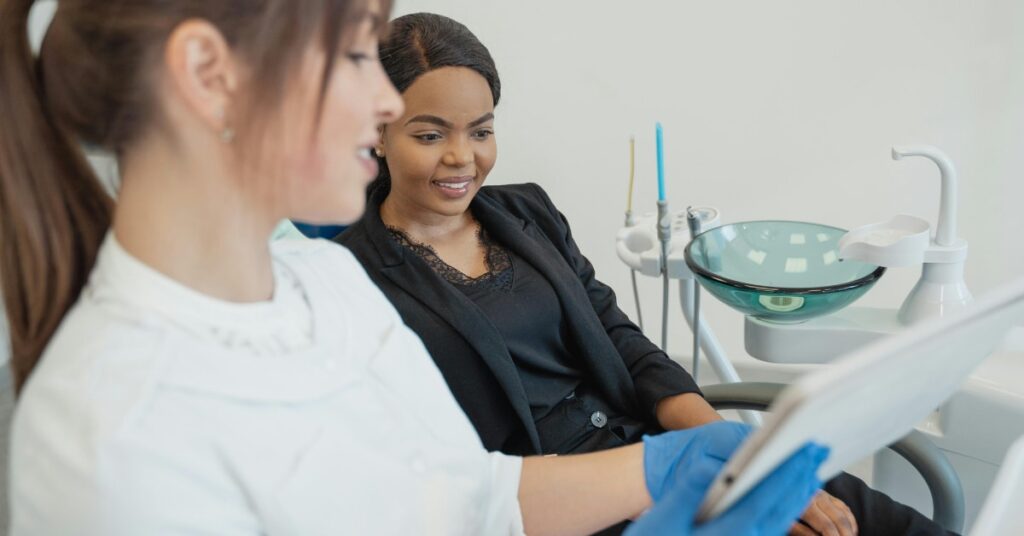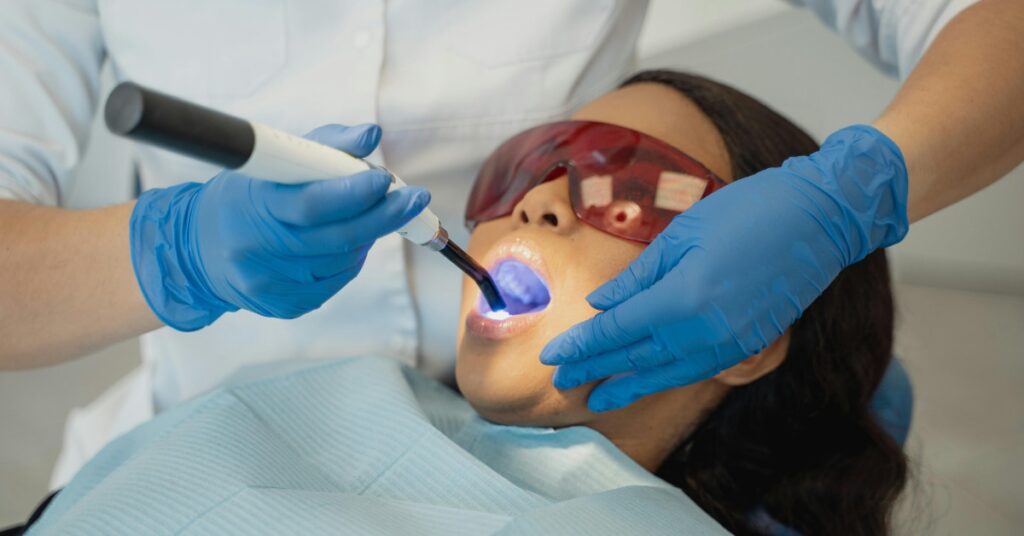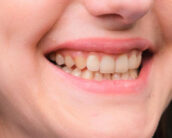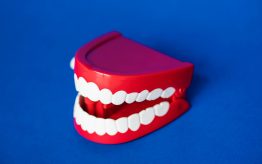Teeth whitening is a popular way to get a brighter smile and boost your confidence. But if you’re undergoing orthodontic treatment, you might have some questions. Can you whiten teeth with braces or Invisalign? The answer is yes, as long as you use the right approach.
Post-treatment, teeth whitening can enhance your new smile. It’s an ideal time for professional whitening, which ensures even and lasting results. On the other hand, whitening your teeth while undergoing orthodontic treatment calls for a little extra care, and getting professional guidance is key to safe and effective results. You’ll want to understand the best practices to keep your smile healthy and bright.
In Australia, many clinics like PureSmile offer specialised teeth whitening services during and after orthodontic treatment. These cater to both braces and Invisalign wearers. But no matter what, always check with your orthodontist first to make sure it’s the right option.
Understanding Teeth Discolouration During Orthodontic Treatment
Orthodontic treatment can sometimes lead to discolouration. Since brackets and wires create nooks where food can hide, they can trap food particles and cause plaque build-up. This build-up can cause staining, especially if not cleaned thoroughly. Regular brushing and flossing help reduce the risk, but teeth discolouration is best addressed by dental whitening.
Different factors contribute to discolouration during orthodontic treatment. These include:
- Poor cleaning techniques
- Consumption of stain-causing foods
- Inadequate fluoride use
Orthodontic patients should also be mindful of their diet. Foods like coffee, tea, and berries can stain teeth. Avoiding these helps maintain a brighter smile.
Orthodontists often recommend special cleaning tools to help address hard-to-reach areas around braces. Regular dental check-ups are also vital for monitoring oral health.
Can You Whiten Teeth with Braces or Invisalign?
Whitening teeth with braces or Invisalign is possible, though methods differ. Braces pose unique challenges since brackets can obstruct access to the tooth surfaces.
Invisalign aligners are removable. This feature allows for easier whitening compared to traditional braces. However, ensure aligners are clean to avoid discolouration.
Orthodontic patients often wonder about the safety of whitening. Consulting an orthodontist is a crucial first step. They can advise on suitable products and techniques, which include:
- Professional whitening treatments
- Custom-fitted whitening trays
- Whitening toothpaste and mouthwash
Consider professional teeth whitening treatments for even and noticeable results. They’re often more effective than over-the-counter options. If you prefer using at-home teeth whitening options, be sure to always follow product instructions carefully for safety.
Teeth Whitening Options During Orthodontic Treatment
During orthodontic treatment, several dental whitening options exist, each with distinct benefits and challenges. Professional treatments, such as those provided by dental clinics, offer reliable results. Dentists use stronger agents under controlled conditions.
At-home options include whitening toothpaste and mouthwash. These products are convenient for daily use and help maintain a bright smile throughout your orthodontic journey.
Whitening kits with custom trays are another choice. These can fit over teeth, offering even distribution of gel. However, results may vary depending on the fit and usage.
Keep potential risks in mind when considering over-the-counter products. Not all are designed for teeth with braces. Also, consulting an orthodontist before starting any whitening regimen is crucial. They can recommend suitable solutions.
Teeth Whitening After Orthodontic Treatment
Completing orthodontic treatment is a perfect time for teeth whitening. The removal of braces or aligners can reveal uneven colouring and minor staining.
Timing is essential for effective whitening. It’s best to wait a few weeks post-treatment before starting any whitening procedure. That way, you allow your teeth to settle and recover from any sensitivity caused by the removal of appliances.
For those looking for powerful, immediate results, in-chair whitening treatments at cosmetic dental studios like PureSmile are a highly effective option. Performed by professionals, these treatments utilise advanced whitening technology to achieve safe, even, and fast results.
If you’re after a more affordable and flexible solution, at-home whitening options are also a great choice for post-orthodontic maintenance. PureSmile offers several trusted options, including:
- Teeth Whitening Trays: Custom-fit trays that help evenly distribute whitening gel.
- Whitening Pens: Ideal for convenient on-the-go touch-ups.
- Whitening Foam: Helps prevent future staining while keeping your smile fresh.
Whether you’re in Sydney, Melbourne, Brisbane or anywhere in between, PureSmile has clinic locations across Australia and a range of post-orthodontic whitening options to suit every budget and lifestyle.
Choosing the Right Orthodontist and Cosmetic Dentist in Sydney
Finding the right specialist is crucial for effective teeth whitening during or after your orthodontic treatment. Look for professionals with a proven track record and positive reviews.
If you’re still searching for a provider, the team at Top 10 Orthodontist can help. They connect patients with the most trusted and experienced orthodontists in major cities across Australia.
Need help finding the right orthodontist in Sydney? Explore the Top 10 Orthodontist directory to find the best orthodontist near you.
With proper guidance and follow-up care, your straighter and whiter smile will last for years.
Whitening with Braces: What Works and What Doesn’t
Whitening teeth with braces requires careful consideration. Traditional whitening strips may not stick well due to brackets. They often lead to uneven results.
Instead, professional whitening can provide more uniformity. Dentists use techniques that target teeth above and below brackets. Custom-fitted trays also ensure better coverage and access.
Avoid products with high concentrations of hydrogen peroxide. These can cause sensitivity or irritation. Use gentler products specifically designed for people with braces.
Methods less effective for people with braces include:
- Whitening strips
- High-concentration gels
- Poor-fitting whitening trays
After getting your teeth whitened, focus on good oral hygiene to maintain your beautiful and vibrant smile. Daily brushing and flossing can prevent staining around brackets.
Whitening with Invisalign: Unique Advantages
Invisalign offers unique advantages for whitening. Aligners are removable, allowing direct access to the tooth surfaces. This makes at-home whitening processes much simpler.
Professional treatments are another option. Dentists often use custom whitening trays for optimal results. These ensure full coverage and uniform whitening across all teeth.
Whitening toothpaste is a supportive tool for those using Invisalign. It helps maintain cleanliness and prevents new stains from forming.
Here are the benefits of teeth whitening with Invisalign:
- Removable trays for easy access
- Compatibility with professional whitening treatments
- Supportive maintenance with whitening toothpaste
Using Invisalign, you may experience fewer barriers to a perfect smile. Keep aligners clean to prevent discolouration and maximise whitening effects.
Professional vs. At-Home Whitening: What’s Best for Orthodontic Patients?
Choosing between professional and at-home whitening depends on individual needs. Each method has advantages that might suit different preferences and circumstances.
Professional teeth whitening offers quick, noticeable results. Dentists apply highly effective agents, monitoring the process closely. This can be ideal for people with complex orthodontic appliances.
At-home whitening provides convenience and flexibility. Products like whitening toothpaste fit easily into daily routines, while kits allow treatment at your own pace. However, results may take longer to achieve.
When deciding, consider factors such as:
- Desired speed of results
- Budget and cost considerations
- Suitability for your specific orthodontic treatment
Consulting your orthodontist can guide this decision. They can tailor recommendations to your oral health needs.
The Role of Cosmetic Dentistry in Orthodontic Whitening
Cosmetic dentistry plays a key role in achieving a bright smile during orthodontic treatment. It offers advanced whitening solutions tailored to each patient’s needs.
Specialists can provide treatments that complement orthodontic work. Options include in-chair whitening sessions, ensuring uniform results, even around brackets or aligners.
By integrating cosmetic dentistry into orthodontic care, patients can enjoy improved aesthetics. The expertise of cosmetic dentists ensures safe procedures, enhancing both appearance and confidence.
Best Practices for Maintaining a Bright Smile During Orthodontic Treatment
Keeping your smile bright during orthodontic treatment requires diligence. Daily care is crucial for preventing stains and maintaining oral health.
Brushing twice daily with fluoride toothpaste helps combat discolouration. Flossing is essential, especially around brackets, to remove debris.
Rinsing with a mouthwash can add an extra layer of protection. It targets areas that brushing might miss, offering antibacterial benefits.
Avoid foods and drinks that stain teeth, like coffee and tea. This can reduce the need for frequent whitening interventions.
- Brush with fluoride toothpaste
- Floss regularly
- Use mouthwash
- Avoid staining foods and drinks
Effective oral hygiene, along with these practices, can enhance whitening efforts, ensuring a radiant smile.
Common Concerns: Sensitivity, Safety, and Lasting Results
Many worry about sensitivity when whitening teeth. It’s common, but usually temporary. If it persists, consult your dentist for tailored advice.
Safety is paramount. Always follow professional guidance to ensure safe whitening practices. Avoid using harsh products that could damage enamel.
To maintain lasting results, adopt consistent oral hygiene and dietary habits. As mentioned above, certain foods can quickly stain teeth.
- Use sensitivity-reducing toothpaste
- Regularly consult with your dentist
- Limit staining foods like coffee and red wine
Effective whitening requires care and attention, but results bring a rewarding boost in confidence.
Frequently Asked Questions About Teeth Whitening and Orthodontics
Many people wonder about whitening with braces or Invisalign. Is it safe and effective?
Teeth whitening is possible but requires special care. Discuss with your orthodontist for personalised advice.
Common questions include:
- Can whitening damage my braces?
- What products are safe to use?
- How soon will I see results?
Understanding answers to such questions helps you make informed choices about your dental care. Always prioritise safety and professional recommendations for the best outcomes.
Achieving Your Brightest Smile
Embarking on a teeth whitening journey during orthodontic treatment requires careful planning. The right approach ensures a stunning smile post-treatment. Whether you’ve just finished Invisalign or had your braces removed, now is the perfect time to take your smile to the next level.
Consulting with your orthodontist and dentist is vital. Their expertise will guide you towards achieving the results you desire while ensuring oral health is maintained.
At PureSmile, we offer both in-clinic whitening treatments and affordable at-home whitening kits to help you maintain a radiant, healthy smile. With convenient locations across Australia, our team is here to support your post-orthodontic whitening goals.
If you’re still looking to undergo treatment or need orthodontic advice, we recommend visiting Top 10 Orthodontist to connect with some of the most trusted and highly rated orthodontists across the country.
Take the next step in your smile journey today.








